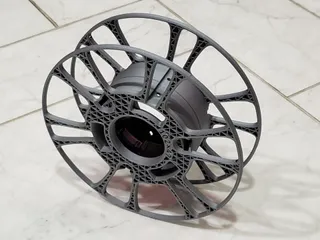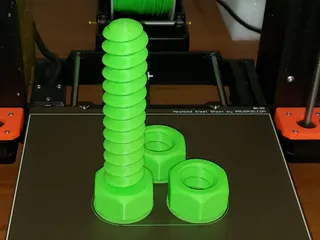Platonic solid coin traps in OpenSCAD
Description
PDFAfter seeing the plethora of cube-shaped coin traps on Thingiverse, I decided to make some based on the five Platonic Solids: tetrahedron (4 sides), cube (6 sides), octahedron (8 sides), dodecahedron (12 sides), and icosahedron (20 sides).
When I showed my wife one of these, she remarked "that's one of the most useless things I've ever seen!"
She has a point. They were fun to make, though.
The geometry of these shapes consist of balls connected by bars. Due to that, they need support around the base due to the small contact area each object has with the printer build surface. I recommend using a support enforcer cylinder (available in Slic3r or PrusaSlicer) to support only the base and not the interior of the objects.
Print this as a single object. Don't separate them! They are positioned so that the largest diameter hollow space is the same height in each object, so you need to pause the printer only once, carefully place a coin into each one (making sure that the coin is below the top layer) and resume the print.
The STL file is designed for a US penny, which is 19.05 mm in diameter. You can adjust the first parameter in the OpenSCAD file or the Customizer.
Print Settings
Printer Brand: Prusa
Printer: I3 MK3S
Supports: Yes
Resolution: 0.20mm layers, 0.4mm nozzle
Infill: 50% gyroid
Filament: Generic PLA
Notes:
Use a support enforcer cylinder to create support from the base to the middle of the balls on the tetrahedron. See the picture above for an example and enforcer dimensions. No need for soluble supports; the support structure should peel away from each object fairly easily.
How I Designed This
Designed completely in OpenSCAD using information about Platonic solids on Wikipedia.
Category: Math Art
Tags
Model origin
The author marked this model as their own original creation. Imported from Thingiverse.




